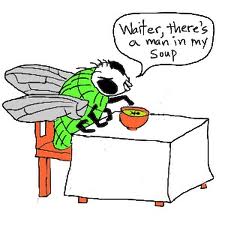A summary of the Google news alerts for breast cancer and cancer, for the week ending 31 January 2014.

The latest tool in cancer detection …
In previous weeks, we’ve had mice and rats, naked mole rats and even sloths as vectors for cancer cures – they make for cute photos. I tried hard this week but the only creature that turned up to save the world from cancer was a fruit fly. As the eeurgh factor of the fruit fly is 100% there is no photo – sorry!
The lead item is a drug that supposedly stops breast cancer metastasis. It’s not the only drug in the pipeline that is supposed to do this, and unfortunately, it’s still at the mice-and-rat-testing stage. I hate getting all excited and then disappointed.
Another study this week shows how stem cells and the daughters of stem cells live for a long time, often leading to recurrences. What the study doesn’t mention is the unfortunate fact that stem cells are not killed by chemotherapy. It’s something that a lot of cancer patients who are in remission haven’t been told – they think chemotherapy is the be-all-and-end-all (or in the words of my breast surgeon: “disinfectant”), and it isn’t (disinfectant implies total cleansing) there are still stem cells there. That’s why we need more research needs to be done in how to deal with these Frankenstein cells, and take away this uncertainty and fear in the cancer journey.
Fruit and veg feature this week. Tomatoes: scientists have genetically-modified tomatoes to contain more anthocyanins, substances that can fight cancer. There’s a trial using olive oil for breast density to see if it can prevent breast cancer.
Two more must read articles: one on melatonin, showing it has the potential to slow down the growth of tumours in triple-negative breast cancer. That’s great news for this very challenging type of breast cancer. Another on how some chemotherapy can be toxic to the heart – hmm … isn’t this stating the obvious?

Another use for tamoxifen [Nolvadex] and it’s not breast cancer
Finally, there’s some bizarre news (not new, apparently it’s been around for some time) –
bodybuilders are using Tamoxifen (Nolvadex) and Arimidex to suppress estrogen in their body and negate the effects of steroids in their bodies.
Why, God, why?









